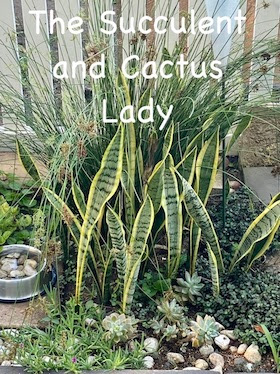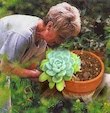Bulbine frutescence in my garden, Tarlton, South Africa
Commonly
called Bulbinella, which is incorrect as Bulbinella is a completely different species, bulbine is effective in preventing skin infection, healing
and soothing cuts, rashes, insect bites, burns, cold sores, pimples and other
skin problems. Its clear and soothing gel forms an invisible 'seal' over the
wound, protecting against bacteria and providing ongoing relief and healing
throughout the day.
It
is a very attractive succulent indigenous to South Africa which needs little
attention, and thrives in most soil types and in most weather conditions. The
juice from the leaves is used in creams, and can also be applied to eczema, burns, rashes, fever blisters and stings etc. I often use it on cuts and scrapes I might pick up while working in the garden.
Growth
Characteristics:
Occurs
naturally in the Free state, KwaZulu-Natal, and in parts of all the Cape
Provinces
Perennial,
Evergreen, Frost tolerant,
A
rosette of fleshy, yellowish-green leaves,
Yelow
or orange flowers borne on elongated clusters of long, thin flowering stems
Height:
±40m; Spread: ±30cm,
Very
popular rockery plant. It is drought, heat and frost tolerant
Cultivation:
Full
sun; Well drained, composted soil
Harvesting:
Pick
fresh leaves throughout the year
Cosmetic
Use
in shampoo as a moisturiser
Medicinal
use
Bulbinella
leaf sap may be beneficial in the following cases:
General
Bulbine
is ideal to grow if you have children as it is a first aid remedy for knocks
and scrapes
Skin
Crash
the leaf softly between your fingers and squeeze the clear leaf sap out
Place
directly on the skin for wounds, burns, rashes, itches, ringworm, cracked lips, herpes, cuts, boils, eczema, insect bites, cold sores, acne
Preparation
and dosage:
Crush
the leaf softly between your fingers and squeeze the clear leaf sap out,
Apply
topically as often as needed
This information from "HealthyLiving Herbs"
Some newly planted Bulbine frutescence in my herb garden
When planting this delightful herb, make sure you leave enough space between each plant as they tend to spread a meter or more
Bulbine self-seeds and you will find new plants coming up all over the garden. These are easily removed from areas where they are not wanted and transplanted to a more appropriate location
Afrikaans: balsemkopieva, copaiba, geelkatstert, katstert
.



.jpg)







